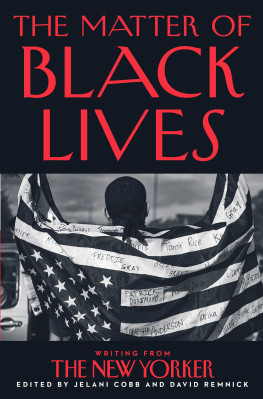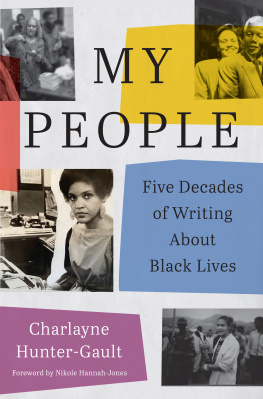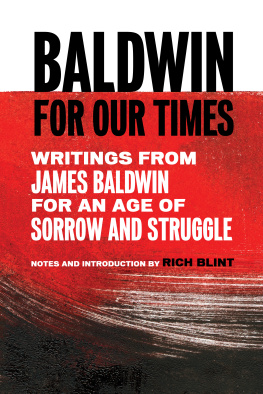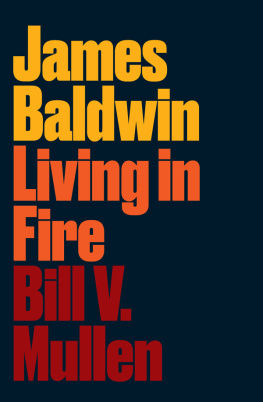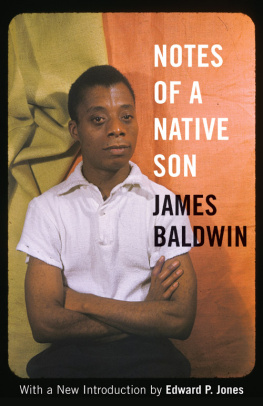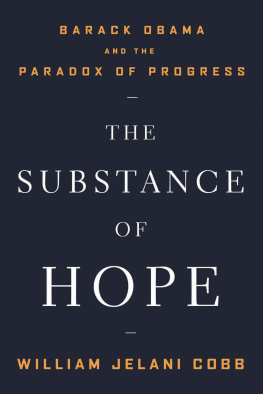Contents
Guide
All pieces in this collection were originally published in The New Yorker. The publication date is given at the beginning of each piece.
Contents
On race, religion, and the future of America.
On skin color in literature.
Why are West Indian immigrants perceived to be different from other African-Americans?
A Presidents racial balancing act.
Americas moral duty after the election of Donald Trump.
Fighting racism by redefining it.
A writers search for the genuine article.
On surviving the heady days and nights of youth.
How a teen-ager becomes a crime statistic.
Home, before and after the flood.
The faultlines in New Yorks schools.
A. Philip Randolph and The Brotherhood of Sleeping Car Porters.
Pauli Murrays separate but equal struggles.
Martin Luther King, Jr., debates a racist.
The epic trek across Alabama.
Coming to terms with the many faces of Louis Farrakhan.
A response to the election of Donald J. Trump.
The Rev. William Barber leads a movement against poverty.
A poet in constant question.
Zora Neale Hurston, American contrarian.
Columbias Overdue Apology to Langston Hughes.
How Albert Murray inspired a generation.
The singular storytelling of Toni Morrison.
Saidiya Hartman reimagines Black America.
Marian Andersons complex legacy.
Sonny Rollins on the bandstand.
P. Jay Sidneys fight to integrate early TV.
Key and Peele, chameleon comedians.
Arthur Jafa brings Black life to the screen.
Kara Walkers vision.
Jay-Z and the rise of corporate rap.
A nonconformist rappers second act.
On Kendrick Lamars album DAMN .
A 1947 lynching trial in South Carolina.
On Jacob Lawrences paintings and Dylann Roof.
A museum of African-American history comes to the capital.
A sixteen-year-old boys ordeal in Rikers.
A childs journey through Georgias special-education system.
Race, memory, and a killing in the suburbs.
How a movement found its moment.
On the streets of Minneapolis after the murder of George Floyd.
A long history of government inaction.
The quest to transform this country cannot be limited to challenging its brutal police.
On motherhood in the face of police brutality.
A sons reckoning with his mothers hope.
I n 1962, subscribers to The New Yorker leafed through the pages of the new November 17th issue and, amid the cartoons and the bountiful holiday-season ads, they came upon a long, blistering piece of writing by James Baldwin, Letter from a Region in My Mind. The tone, and also the subject, of Baldwins prose was unusual, even shocking, for the magazine. As Ben Yagoda writes in About Town, a history of the magazine, The New Yorker had, in its early decades, largely kept the subject of race at a distinct remove from its readers. (In doing this, it was similar to most other mainstream publications.) There were exceptions, including Rebecca Wests masterly 1947 account of a lynching trial in South Carolina; Comment pieces by E. B. White gently criticizing discrimination; profiles by Joseph Mitchell, Whitney Balliett, and Bernard Taper; and short fiction by Nadine Gordimer. But, as Yagoda writes, between The New Yorkers founding, in 1925, and the beginning of the Second World War, even the cartoons and the advertisements all too often depicted Black Americans in the most stereotypical terms: as servants, Pullman porters, and comic figures.
Baldwins essay was, for many readers, a jolt, a concussive experience. It gave no comfort to what Baldwin called the incredible, abysmal, and really cowardly obtuseness of white liberals. As an indictment of American bigotry and hypocrisy, tackling themes of violence, sex, history, and religion, the piece continues to resonate more than half a century later. The New Yorker had long employed the rubric Letter from...Letter from London, Letter from Johannesburgas a way to announce the far-flung locations of its correspondents. Baldwins title indicated that he was writing, most of all, from his inner depths. (When he published the essay as a book, the following year, he called it The Fire Next Time.)
Letter from a Region in My Mind, which appeared before the March on Washington and the Civil Rights and Voting Rights Acts, helped to reorient the American discussion of race. The piece also helped to push the magazine, which reached a well-educated, if monochromatic, readership, toward deeper thinking and reporting about an essential American subject. And yet its appearance in the magazine was a matter of publishing happenstance. Like many freelance writers and artists, Baldwin habitually juggled multiple assignments and commitments. He had promised William Shawn, the editor of The New Yorker, a long report on his travels to the post-colonial states of Senegal, Sierra Leone, Liberia, Guinea, and Ghana. At the same time, he was working on a piece about his youth in Harlem for Norman Podhoretz, the editor of Commentary. (The multitasking did not stop there; Baldwin was also trying to finish his third novel, Another Country.)
Somehow, the African trip, while important to Baldwin as a matter of personal experience, did not inspire successful writing. As his biographer David Leeming notes, Baldwin formed some tentative impressions of situations and of people whom he met there, but nothing seemed to cohere on the page. He was particularly reluctant to make any presumptions of kinship or shared experiences between Africans and Black Americans. The trip had the paradoxical effect of renewing Baldwins interest in the autobiographical essay about Harlem and, by extension, Black life in America. He was also interested in finding a way to make sense of an encounter hed had with Elijah Muhammad, the diminutive and enigmatic leader of the Chicago-based Nation of Islam. Baldwin wanted to write about the contrast between the Christian Church in which he was raisedhis father was a preacher in Harlemand the Nation of Islam, all in the greater context of the intolerably desperate conditions of Black life in the United States. And so, after giving up on the Africa piece, he concentrated on his American essay. But, instead of sending his manuscript to Podhoretz, he gave it to Shawn, at The New Yorker, which had a much bigger audience than Commentary and paid better. Podhoretz, who later became a godfather of the neoconservative movement, never forgave Baldwin, Shawn, or The New Yorker. (In 1963, Podhoretz published an essay of his own, called My Negro Problemand Ours, but that is another story.)
After publishing the Baldwin essay and sensing its resonance among readers, The New Yorker, like other publications, extended its coverage of race and devoted considerable space to the civil-rights movement. Shawn hired a young woman named Charlayne Hunter (now Hunter-Gault), an aspiring journalist who had generated national headlines when she and her classmate Hamilton Holmes integrated the University of Georgia. At first, she was an editorial assistant. In 1964, after she wrote about a riot in Bedford-Stuyvesant, she was promoted to staff writer, the first Black staff writer in The New Yorkers history. Calvin Trillin, who came to the magazine from Time, in 1963, and wrote about the drama in Georgia, began reporting consistently on the movement. Renata Adler wrote a long piece on the march from Selma to Montgomery. And, in 1968, Jervis Anderson, a Jamaican-born newspaper reporter, joined the staff and wrote numerous Talk of the Town pieces in addition to profiles of A. Philip Randolph, Bayard Rustin, and Ralph Ellison. His four-part portrait of Harlem in the first half of the twentieth century was eventually published as a book, This Was Harlem.

